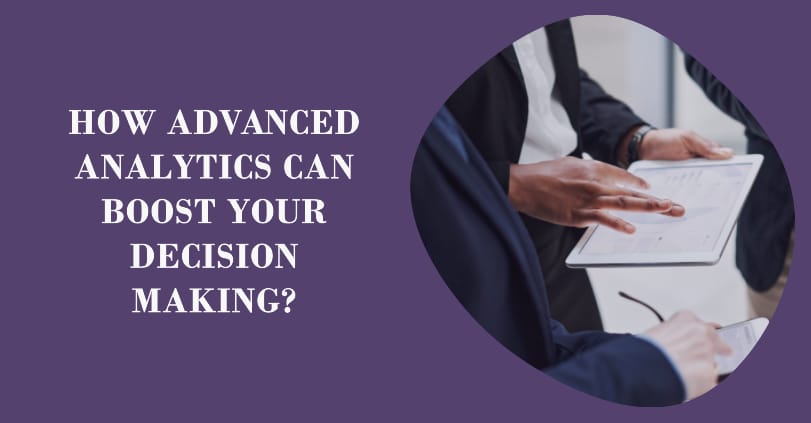How Advanced Analytics Can Boost Your Decision-Making

Are you tired of making decisions based on gut feelings and guesswork?
Well, get ready to have your mind blown. Advanced analytics has the power to revolutionize your decision-making process like never before.
With the ability to uncover hidden insights and make accurate predictions, you’ll be able to navigate your business with confidence and precision.
Say goodbye to uncertainty and hello to data-driven success.
Buckle up, because your decision-making journey is about to level up.
Key Takeaways
- Predictive modeling and data analysis using advanced analytics can uncover hidden patterns and correlations in large volumes of data.
- By leveraging advanced analytics, businesses can identify new opportunities, optimize performance, and make data-driven decisions for growth.
- Advanced analytics enables accurate predictions of future outcomes by analyzing historical data and identifying patterns.
- By enhancing risk assessment and resource allocation through advanced analytics, businesses can proactively mitigate risks, strengthen security, and maximize efficiency.
Uncovering Hidden Insights
Discover valuable insights that may have previously gone unnoticed by leveraging advanced analytics. By analyzing large volumes of data, you can uncover hidden patterns and correlations that can lead to identifying new opportunities and optimizing performance.
Advanced analytics techniques, such as machine learning and data mining, allow you to dig deeper into your data and extract valuable insights that traditional analysis methods may overlook.
These insights can help you make more informed decisions and drive business growth.
For example, by analyzing customer data, you may discover untapped market segments or identify areas where you can improve customer satisfaction.
Understanding Data Patterns and Trends
To make better decisions, you need to analyze data patterns and trends. One way to do this is through predictive modeling, which uses historical data to forecast future outcomes. By applying statistical algorithms and machine learning techniques, predictive modeling can help you identify patterns and trends that may not be apparent at first glance. This allows you to make more informed decisions based on data-driven insights.
Additionally, data visualization plays a crucial role in understanding data patterns and trends. By presenting data in a visual format, such as charts or graphs, you can easily identify patterns, correlations, and anomalies. This visual representation of data allows for better comprehension and interpretation, enabling you to make more accurate and effective decisions based on the insights gained from the data.
Making Accurate Predictions
You can leverage advanced analytics to accurately predict future outcomes and make informed decisions. By improving forecasting accuracy and leveraging predictive models, you can gain valuable insights into potential future scenarios.
Advanced analytics enables you to analyze historical data, identify patterns, and make predictions based on this analysis. By using sophisticated algorithms and machine learning techniques, you can develop predictive models that can forecast future trends and behaviors with a high degree of accuracy.
These models take into account various factors and variables, allowing you to make more accurate predictions about customer behavior, market trends, and business outcomes. With this information, you can make data-driven decisions that are based on reliable forecasts, reducing uncertainty and increasing the likelihood of success.
Enhancing Risk Assessment
By leveraging advanced analytics, you can enhance your risk assessment capabilities and make more informed decisions. Here’s how:
- Automating processes: Advanced analytics can automate the collection and analysis of vast amounts of data, saving you time and effort in risk assessment. It can quickly identify patterns, trends, and outliers that may indicate potential risks.
- Identifying vulnerabilities: Advanced analytics can help identify vulnerabilities in your systems and processes by analyzing historical data and detecting anomalies. By understanding these vulnerabilities, you can take proactive measures to mitigate risks and strengthen your security measures.
- Predictive modeling: By using advanced analytics techniques such as machine learning and predictive modeling, you can forecast potential risks and their impact on your business. This allows you to prioritize and allocate resources more effectively.
- Real-time monitoring: Advanced analytics can provide real-time monitoring of data streams, alerting you to any sudden changes or anomalies that may pose a risk. This allows for immediate action to be taken to minimize potential damage.
Improving Resource Allocation
How can advanced analytics help you optimize resource allocation?
By utilizing advanced analytics, you can improve your resource allocation strategies to maximize efficiency and optimize operations. Advanced analytics can provide valuable insights into your organization’s resource usage, allowing you to identify areas of inefficiency and make data-driven decisions to allocate resources more effectively.
Through the analysis of historical data and real-time information, advanced analytics can help you identify patterns, trends, and correlations that may be affecting resource allocation. By leveraging these insights, you can make informed decisions to allocate resources in a way that maximizes productivity, reduces waste, and ultimately improves your organization’s overall performance.
With advanced analytics, you can achieve better resource allocation and drive operational excellence.
Conclusion
Advanced analytics is like having a crystal ball that tells you everything you need to know. It’s like a secret weapon that uncovers hidden treasures of information, making decision-making a breeze.
With its magical powers, you can predict the future with accuracy and assess risks like a superhero. And let’s not forget about resource allocation – it’s like having a personal assistant who knows exactly where to put your money.






